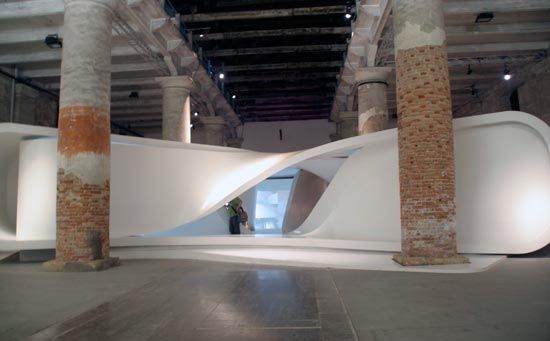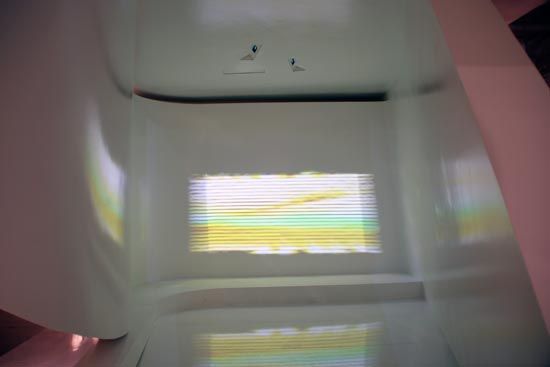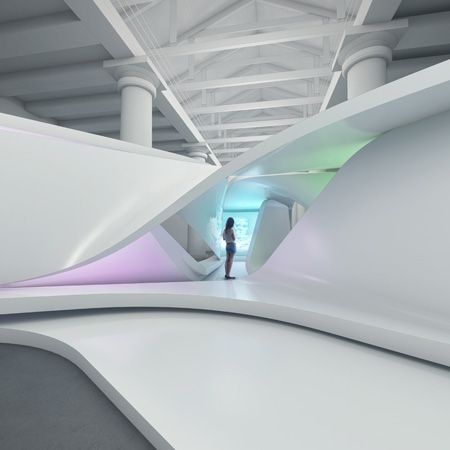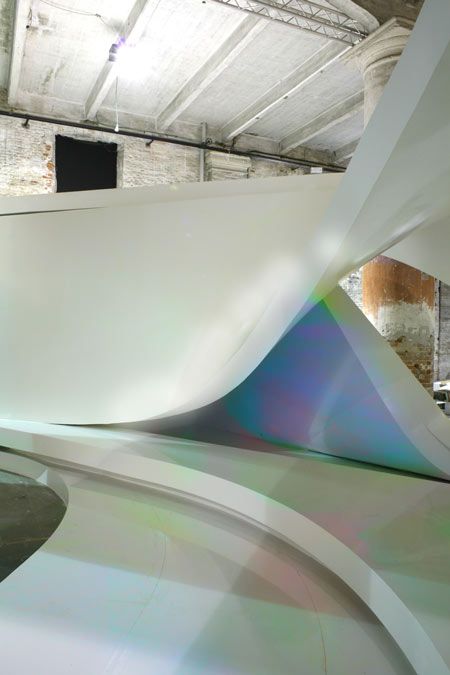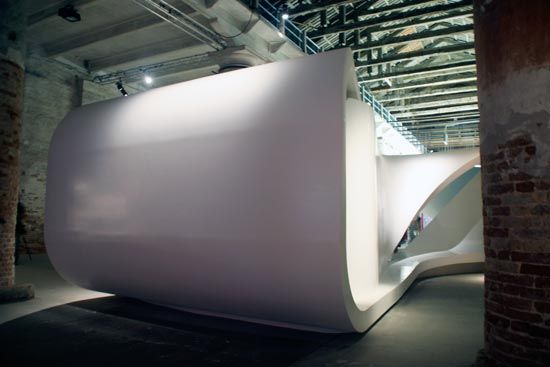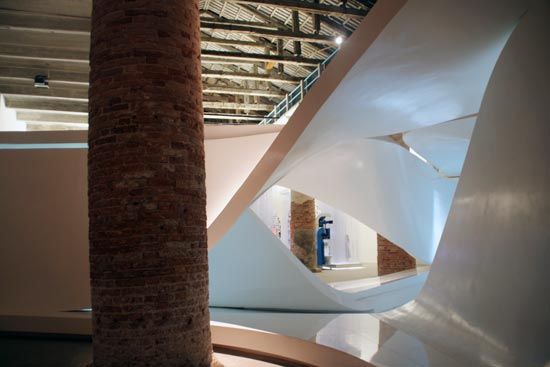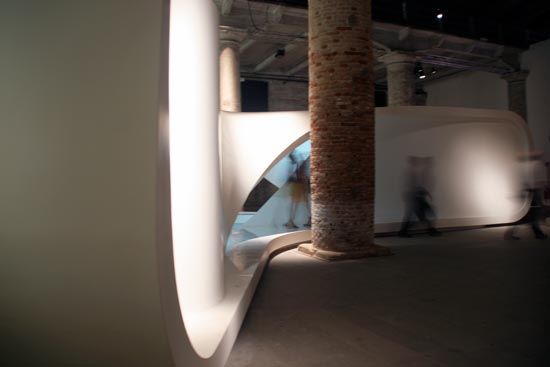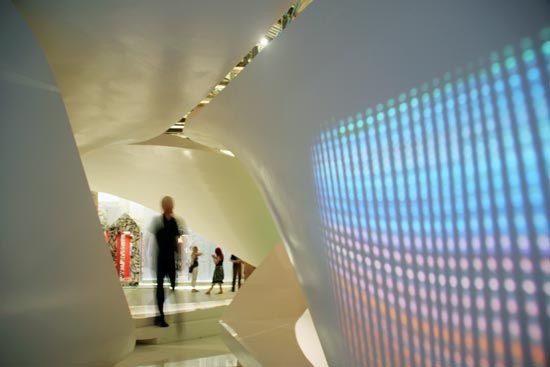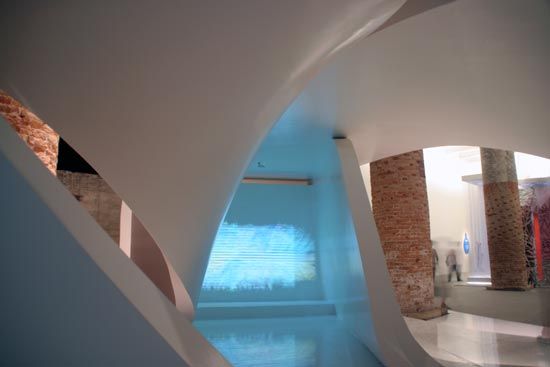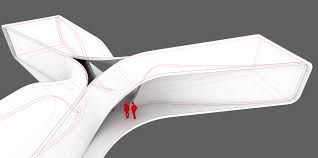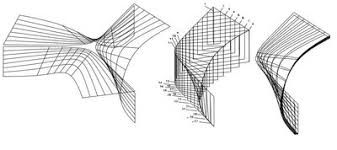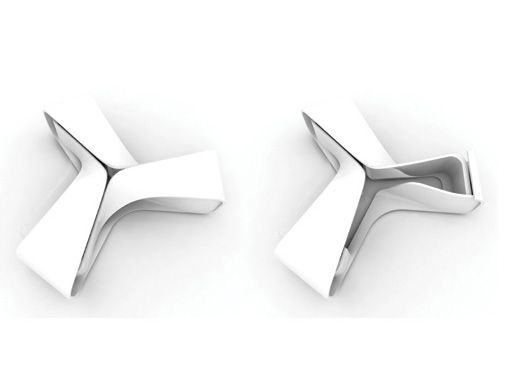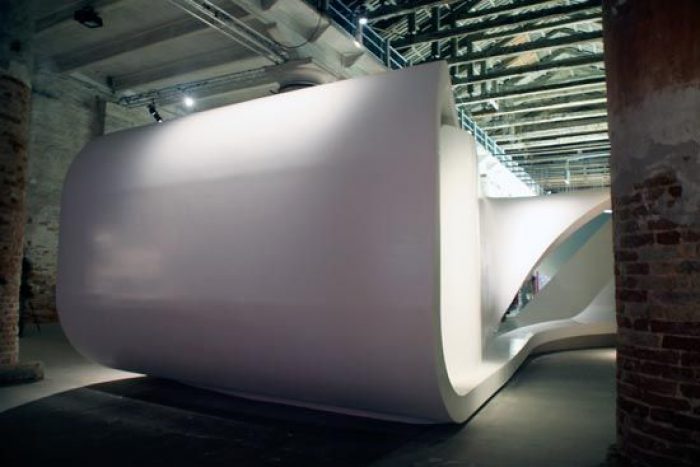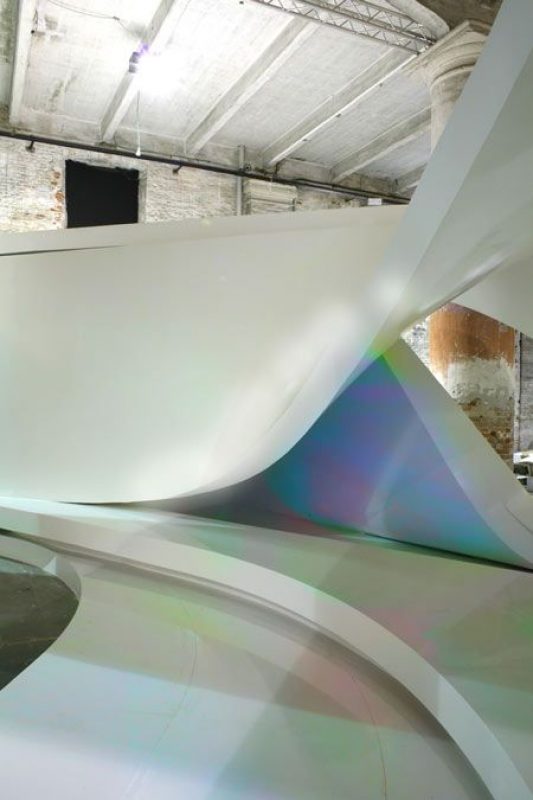The Changing Room. There is quite a question contained within the walls of this instillation for the 2008 Venice Biennale, designed by UNStudio. Is it possible for one to change one’s self to become one’s self? Is it possible to turn into yourself? What would you have been before?
It is quite possible and probably correct, that it is possible and one only has to spend enough time as one’s self to learn a thing or two and thus decide to change. Does this mean that we’re all born wrong or that we’re born blank and the changing starts from the word ‘go’? Wouldn’t it be rather startling and a bit confusing, not knowing the language yet, to hear the midwife shout ‘go!’ the moment you’ve emerged from this long uncomfortable journey away from where it was nice and warm and comfortable? ‘Why is everything so bright? Where’s the water? I’ve only just got here, why do you want me to leave? How did I understand what you meant by “go!”?’
In the words of the architects, “The installation explores the transformative potential of the material world. Just like clothes designers, architects offer alternate looks and identities, age and income-appropriate shells. These constructions consist of a miscellaneous package of endogenous and exogenous values; things and ideas that inherently belong to architecture and its traditions, and things and ideas that do not, but that nevertheless profoundly influence architecture.”
So perhaps I’ve mucked the whole thing up by reading humanity into something that is meant to examine architecture. But I think the fact that we wrap ourselves in these shells, whether it is a building or a shirt, makes them indicative of what we are. It doesn’t make these things people, but they certainly act as an analogue for them.
Is it then possible for architecture to have its own autonomy? Or is it constantly observing, learning and changing in light of all which is around it? UNStudio proposes a switching on and switching off of autonomy. Architecture is and things happen around it and every now and then architecture and its constructers make an autonomous decision to make something or some idea a part of itself.
Thus it would seem, that architecture is not born wrong, but is instead blank from the word ‘go’ and is constantly learning and in turn deciding to change itself. And being an inanimate thing, it is not startled by any exclamations made by any nearby midwives. As for humans, well the question still remains, though I think most babies will argue that they are blank and not merely wrong. To this end, UNStudio offered this construct where ‘the visitor encounters a kaleidoscopic world of people posing, inviting voyeurism, and seeking transformation in their own conceptualizations’.
Credits:
UNStudio, The changing room – couture of architecture
Photos © Chrsitian Richters
UNStudio: Ben van Berkel, Caroline Bos with Christian Veddeler and Hans-Peter Nuenning, Steffen Riegas
Light design with: meso digital interiors, Frankfurt
Engineering and building: p&p gmbh, Fuerth/Odenwald
Subsidized by: The Netherlands Architecture Fund, Rotterdam
The Netherlands Foundation for Visual Arts, Design and Architecture, Amsterdam
Sponsored by: Arup, Amsterdam, Caparol GmbH, Ober-Ramstadt, G&S, Amsterdam
Pieters Bouwtechniek, Amsterdam, P&P GmbH, Fürth/ Odenwald, Rendertaxi, Aachen, Resopal GmbH, Gross-Umstadt, Sorba, Winterswijk
